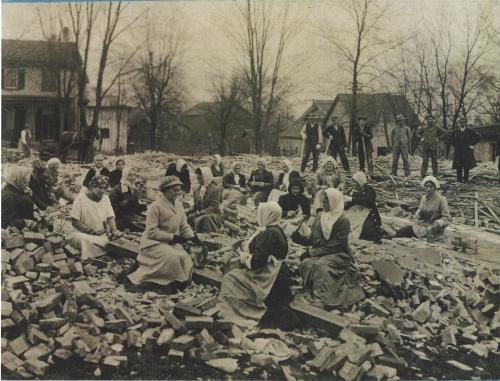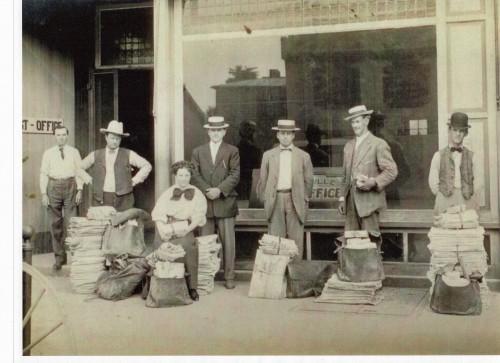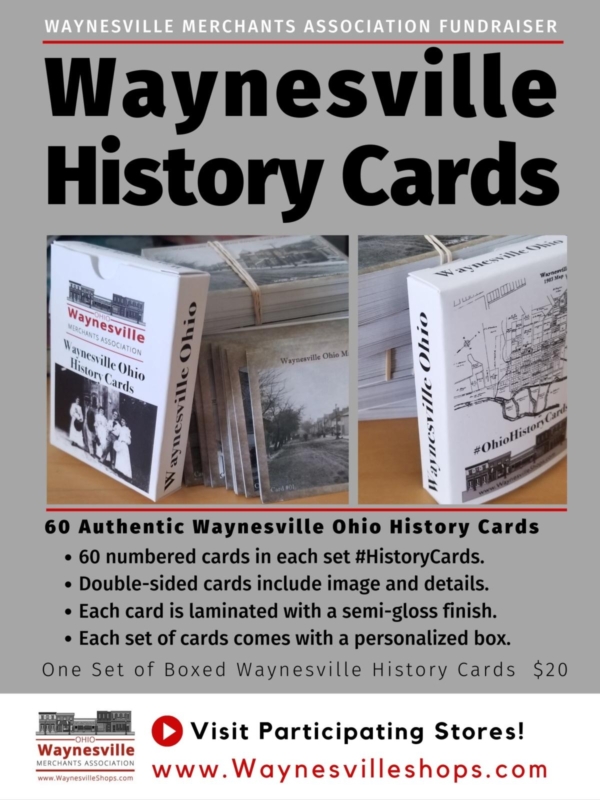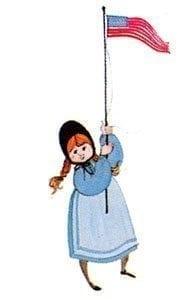Description
In Store Pick Up.
Canada Goose Gallery
97 South Main Street
Waynesville, Ohio 45068
Waynesville History Card # 1

Waynesville Ohio North Main Street early 1900’s.
North Main Street Looking South. 1905.
Waynesville National Bank as it looked in 1905 after construction in 1901 and before the Tower Clock installation. Note the watering trough for horses in front of the bank building. The trough, used in the 1920s is now located in the Miami Cemetery. This photo is the West side of Main Street looking South from Tyler Street (Now Chapman Street).
North of North street lot Tyler street was named after Vice President Tyler.
Waynesville History Card #02

Boxed Set of Waynesville History Cards. Fundraising effort for Waynesville Downtown Merchants Association.
Phillips Ice Cream Parlor Early 1900’s
Today is Brass Lantern/Cheap John’s Country Store. Located on Southeast corner of Main & Miami streets. Located on the Southeast corner of Main & Miami streets. Residence and Ice Cream Parlor. Owned and operated by William and Clara Mills Phillips from 1899 until after 1926, Ice cream made in the rear frame addition of the building. In Winter of 1901 onward was Phillips Electric Theater. This photo was taken in 1905 during Waynesville Homecoming.
Waynesville History Card #03
Waynesville Methodist Church Women Cleaning Bricks in 1905. The original church, built-in 1840, was demolished and the bricks from the old church were used to build the new church at North and Third Street.
Waynesville History Card #04

Boxed Set of Waynesville History Cards. Fundraising effort for Waynesville Downtown Merchants Association.
The New Methodist Church with Reclaimed Bricks. 1915. Waynesville United Methodist Church in 1915 replaced the 1849 edifice. Church parsonage shown at the left was built in the 1870s. 297 North Street – Waynesville United Methodist Church: The current 1914 structure replaced the original brick church built on this site in 1840. Men of the church and community helped with the construction and the women cleaned the bricks from the old church by hand to be used in the new one. Two large stained glass windows adorn the sanctuary, the Good Shepherd, and The Agony in the Garden of Gethsemane. In 1960, the Christian Education addition was dedicated, and the following year, the parsonage was added.
Waynesville History Card #05

Myer Hyman Store, Waynesville, Ohio early 1900’s
The Meyer Hyman Store. The great Closing-Out-Sale of The Myer Hyman Department Store in 1912. Built by B. S. Howell in 1903 for department store and residence, today is Benner’s Colonial Traditions. Today Benner’s Colonial Tradition. Myer Hyman Department Store closing sale was in 1912. Built by B. S. Howell in 1903 for department store and residence.
Waynesville History Card #06

Boxed Set of Waynesville History Cards. Fundraising effort for Waynesville Downtown Merchants Association.
Accommodation Line Scenic Byway. Today Holly B’s Sweets. The building was built in 1905 by John Satterthwaite, a prominent Quaker businessman, and housed the Miami Visitor. The photo was taken at Homecoming time. Miami Visitor changed its name to Miami Gazette in 1865.
Waynesville History Card #07
Riding Bicycles Near Waynesville in 1905: The photo shows the fashionable pastime of bicycling in Edwardian-era. In 1905 it was against the law in Waynesville to ride a bicycle faster than five miles per hours down Main street. This was a punishable offense with a fine. It is worth noting that the ladies’ version of the bikes came around the 1890s. It had a step-through frame rather than the diamond frame of the gentlemen’s model and commonly came with a skirt guard to prevent skirts and dresses becoming entangled in the rear wheel.
Waynesville History Card #08
South Main Street Waynesville Ohio. This photo, taken around 1900, shows the West side of Main Street between North Street looking toward Miami Street. Today you will find Waynesville Antique Mall, Benner’s Colonial Traditions, Butter Churn, Rae’s Fancy, The Looking Glass, American Pie, and Holly B’s Sweets.
Waynesville History Card #09
Kier’s Motor 1956-Today Lilly’s Corner Mall. The car in the window is 1956 Studebaker President. This location has been many things over the years. The first building on this site was a Bakery & Grocery. The second building was called Simpson & Rogers Garage. Kier’s Motors – Studebaker Sales and Service was here in the early 1950s then became Kier’s Service and Sales with no garage.
Waynesville History Card #10
The Great Fire On Main Street in Waynesville April 7, 1900. The fire was started by children playing with matches in the broom factory. It almost leveled the entire business block. Women formed bucket brigades to assist local firemen as well as fire companies from Harveysburg and Morrow Ohio.
Waynesville History Card #11
Covey & Wampler Plumbing Supply Store mid-1900s. Today is Canada Goose Gallery. After the Hardware store, it became a Krogers Grocery Store from the 1930s to Mid 1940s. Then it became Covey & Wampler Plumbing Supply Store – until 1969. From 1969-1972 it housed the Little Red Shed Antiques which was the third antique shop in Waynesville.
Waynesville History Card #12
Wooley & Son 1880 – Today is The Looking Glass. Wooley and Son Harness and Saddles was the first business to move into the new building on Main Street in Waynesville when construction was finished in 1879. This 1880 photo has leather craftsmen and the owners of the business behind the hitching rack.
43-49 South Main – Woolley and Son Building: This building has three bays with three slender dormers. In 1880 Woolley & Son operated a harness and saddle business on the south side of the building. In later years, in the 1930s and ’40s, it was occupied by the D.R. Smith Grocery. The north entrance was a drug store operated by various people over the years including Dr. J.E. Janney and Dr. Wymer Drake.
Waynesville History Card #13

Boxed Set of Waynesville History Cards. Fundraising effort for Waynesville Downtown Merchants Association.
Old Corwin Covered Bridge Over the Little Miami River. Located on Waynesville-Corwin Avenue constructed in 1859. A sign on the bridge once read “$5 fine for driving faster than a walk over this bridge.”
Waynesville History Card #14

Early Stroll at the Waynesville Bridge between Waynesville and Corwin
Young People on the Old Corwin Covered Bridge. Late 1800s.
Waynesville History Card #15
The Waynesville School House was built in 1891. The Waynesville Union School was the second school building at this location and had 12 grades. The new school was built in 1915 and still stands today.
Waynesville History Card #16

1900’s Students in Waynesville, Ohio area with Horse drawn School Bus
Students with their horse-drawn school bus in 1906. Pictured: John Zell with Corwin Students and their horse-drawn school bus in 1906. Corwin didn’t get motorized school buses until Reverend Lamb convinced Wayne Township School Board that Corwin school children deserved to be transported to Waynesville.
Waynesville History Card #17
First Tractors sold in Waynesville in 1917. First Tractors sold in Waynesville were exhibited by the Rogers and Simpson Garage (Lilly’s Corner Mall) building built in 1907.
Waynesville History Card #18
Waynesville Cadet Band. The Waynesville Cadet Band pictured on the south side of Waynesville National Bank. Dr. Howard Hathaway’s Dental Office is in the background.
Waynesville History Card #19
First Tractors sold in Waynesville in 1917. The first tractors sold in Waynesville were exhibited beside the Rogers and Simpson Garage (Lilly’s Corner Mall) building built in 1907.
Waynesville History Card #20

Waynesville Dairy Horse and Buggy
Waynesville Dairy Delivery on the Corwin Bridge 1904. Photograph of the Waynesville Dairy deliveryman as he pauses at the bridge over the Little Miami River between Corwin and Waynesville. Dairy was owned and operated by the Stokes family on Lower Springboro Road.
Waynesville History Card #21
Dumping Whiskey by Waynesville Crusaders Temperance Union. Crusaders Temperance Union were dumping Kegs of Whiskey in 1874 at the William Raper Saloon on the northeast corner of Main and Miami Streets. Raper, the repentant owner, is shown in the middle of the first row. The crusaders hit all the saloons in town and in Corwin.
Waynesville History Card #22
Zimmerman Grocery Selling Dr. Robb’s Liniment. Dr Robb’s Hyper Drome Liniment manufactured here. Miami Gazette housed on the second floor of the building in 1900. The Printz Building was built in 1881.
Waynesville History Card #23
Waynesville Post Office, 1906. The Waynesville Post Office was on the first floor, C.L. Kreakler Co. Furniture was on the second floor. The building was demolished to make room for the Farley Hardware Store.
Waynesville History Card #24
Baking Crackers At The Cracker Factory early 1900s. This building is located at 258 Miami Street (at the alleyway.) The short-lived cracker factory was to become the Telephone Exchange Building circa 1920s. Mrs. Earnhart ran the telephone exchange. One of the early Phone numbers in Waynesville was a two-digit number.
Waynesville History Card #25
The Great Waynesville Train Wreck. By 1857, the Little Miami was a major east-west railroad with connections to St. Louis, Pittsburg, Columbus, Dayton, Cleveland, New York, Baltimore, Boston, and Canada. The photo shows train derailment. There were two great train wrecks, one being a wreck with train cars filled with circus animals and employees of the circus. The Train carrying the John Robinson Circus was crashed into by a heavy freight train, while stopped at the station taking on water. The circus train left Xenia at midnight, where an exhibition show had taken place and was headed toward Cincinnati for the next show. Another train coming along behind this train crashed into the rear of the stopped train. Many wounded and a number of fatalities.
Waynesville History Card #26

Waynesville Bank early 1900’s
Waynesville National Bank 1901. This 1901 photo of Waynesville National Bank is just after construction. Waynesville made banking history in 1877 by opening a short-lived branch in Lebanon whose bank had closed. 9 North Main – Lebanon Citizens National Bank: Founded in 1875 as the Waynesville National Bank, on the northeast corner of Main and North Streets in the Miami House, the current structure was erected in 1901 after the Great Fire of 1900 destroyed all but the two northern-most buildings on the block. In September 1997, then-owner Key Bank sold the business to its present owner, The Lebanon Citizens National Bank.
Waynesville History Card #27
Inside the Waynesville National Bank Building, 1903. The interior view of the Waynesville National Bank in 1903. William Allen is in the cashier’s cage in the lobby. Allen served the bank for 60 years and was the oldest banking executive in the US when he died in the 1940s.
Waynesville History Card #28
Rogers & Simpson Garage, 1932 – Today Lilly’s Corner Mall. Owners: Mark Rogers and Vern Simpson.
Waynesville History Card #29
Waynesville Train Station (located in Corwin.) Daily trains transported passengers and freight south to Cincinnati and north to Springfield. Passenger service was discontinued in 1938.
Waynesville History Card #30
The Great Waynesville Fire on April 7, 1900. The destruction following the great fire in Waynesville included most of the buildings in the entire block. LCNB is located on this site today.
Waynesville History Card #31
Paving Waynesville’s Main Street Repair in the 1930s. Early paving of Main Street started at the north end of town. The fountain, used as a watering trough for horses, was salvaged and resides in the Miami Cemetery in Corwin.
Waynesville History Card #32

Boxed Set of Waynesville History Cards. Fundraising effort for Waynesville Downtown Merchants Association.
Waynesville South Main Street, the 1920s – Currently Canada Goose Gallery. This corner building on South Main Street is currently the Canada Goose Gallery. This picture is sometime after the fire that demolished the upper floor of the building.
Waynesville History Card #33
Waynesville North Main Street After Snow Storm, 1912. Snow Scene at the corner of Main and North Streets about 1912.
Waynesville History Card #34
Miami House on Main Street in Waynesville, Ohio (1912). Many historical events were planned in this building. Little Miami RR was organized in the dining room in 1835. Wayne Township Public Library was founded there in 1917. At the time of this photo, it was the J.C. Hawke Hardware Store
Waynesville History Card #35
Cadwallader Hall – Main and Miami Street. The late 1800s. 93-97 South Main – Cadwallader Hall: Built in 1873, this structure housed the Town Hall from 1874 to 1921. It housed operas, dances, movies, concerts, and lectures. In 1921, a devastating fire consumed the second floor of the building. The remaining structure is part of the original building.
Waynesville History Card #36
Vein of Limestone passes under Waynesville (Postcard.) The photo of The Big Rock was taken in 1900 and used as a postcard. It shows the vast vein of limestone originating near Cincinnati and continuing through Waynesville. The outcropping of limestone is buried under the hillside near the site of McDonalds’s Restaurant. The huge glacial deposit was removed to make space for the fast-food restaurant.
Waynesville History Card #37
The Friend’s Home & Church. Today it is the Museum at the Friends Home. The Friends Boarding Home was built in 1905 for the care of elderly Quakers. The building stands at the corner of Miami and Fourth Streets. It is now the Friends Home Museum showcasing Wayne Township history.
Waynesville History Card #38
Men Cutting Ice To Be Stored At The Mill, 1911.This was early refrigeration. Men from the area would cut ice from the ponds of Waynesville Mills. Wright’s Grist Mills included a large icehouse where the blocks of ice were stored, and layered in sawdust. Supply usually lasted the village consumers one year.
Waynesville History Card #39

Boxed Set of Waynesville History Cards. Fundraising effort for Waynesville Downtown Merchants Association.
Waynesville Post Office Mail Carriers, 1905. Pictured is the Staff of Waynesville Post office, with Jessie Robitzer (seated), the first female employee. The first post office in Waynesville was opened in 1804 in the log store of Samuel Heighway, the village founder. From left to right: Frank Farr, George Mills, Jesse Molatt Robitzer,
Up White, Curt Hisey, Joe Mendenhall and Fred Henderson.
Waynesville History Card #40
Waynesville Masonic Temple chartered in 1848 as the Free and Accepted Masons Lodge #163. 232 Miami – Old Masonic Temple: Valley Baptist Church built this structure in 1848 of common bond brick with a cut limestone foundation. The upper floor has the original decorative pressed tin on the walls and ceiling. The building has housed the Free and Accepted Masons #163 (1896), a private business, and an antique store. Today it is home to The Fabric Shack Décor and Fabric Shop.
Waynesville History Card #41
The Harris Guards-13th Infantry Regiment 1879. Company F of the 13th Infantry Regiment, Ohio National Guard, known as the “Harris Guards” was established in Waynesville, Ohio more than a decade after the Civil War. It was organized September 25th, 1878 and were disbanded on May 23rd, 1885.
Waynesville History Card #42
Will O. Gustin Livery – Originally Behind Hammel House Inn B & B. Will O. Gustin’s Feed and Livery Stable was at the rear of the present-day Hammel House Inn, which Gustin had also owned earlier.
Waynesville History Card #43
Funeral Carriage-Today’s Location Forget Me Not.
Earl Conner, Sr. is in the driver’s seat of Walter McClure Funeral Home Family Carriage. The photo was taken circa 1910. From 1864-1872 this building was the Patrick McDonald Residence. In 1872 it became the William Roper Saloon. Waynesville History Card #44
I. H. Harris House, 1903. Constructed in 1844, this was a business and residential building. When this was the Exchange Bank, Harris kept his collection of freshwater pearls here. The pearls were sold to Tiffany & Co. in New York in 1885. They won a gold medal at the Paris World Exposition in 1889.
Waynesville History Card #45
Carriage Outside of the Second Union School. Late 1800s. Carriage outside the Second Union School, driven by Oakley Ridge in the late 1800s. The school was built in 1891.
Waynesville History Card #46
Hicksite Friends Meeting House,1811. 169 South Fourth – White Brick Meeting House: Families from the Religious Society of Friends (Quakers) moved to Waynesville from Virginia, North and South Carolina, and Georgia as a protest to slavery. The Miami Monthly Meeting opened 10th mo 13, 1803. By 1807, its 1,807 members needed a larger Meeting\ House. This White Brick building was completed in 1811 with John Satterthwaite serving as the clerk of the Building Committee. This structure is the oldest regularly attended religious building west of the Allegheny Mountains.
Waynesville History Card #47
Waynesville Bank Five Dollar Bill, the Early 1900s. Before the Federal Reserve was established, banks either printed their own paper money or had their bills printed in Washington. This bill was a $5 bill available prior to 1916. Actual bills are available to view at the Friends Museum in Waynesville.
Waynesville History Card #48
The Funkey-Evans House in the early 1900s. The Funkey-Evans House was built in 1880. Restored in 1988-1989 by Lee and Dill Philpott. 102 North Main – John and Clara Funkey House: Built in 1883 by a local craftsman on two lots purchased by Clara Funkey, this Italianate style home has metal lintels above the windows and doors with metal rope dentil moldings and returns. The bricks were molded by Darbyshire Brickyard in Clinton County. Joel Evans (brother of Dr. Evans, #8) and his socialite wife Cynthia purchased the house in 1894. Uses over the years included a residence, doctor’s office, funeral home, apartment house, and restaurant. The home was restored in 1990 and a cottage (now a Bed & Breakfast) was added at the side. The damaged original fence was replaced with one from an old mansion in Bexley, Ohio. ~ Museum at the Friends Home.
Waynesville History Card #49
Waynesville North Main Street, 1906. North Main Street with a view of the buildings along the west side of the street prior to the fire in 1900. The first building past the bank was completely destroyed and later became the bank parking lot. Cigar factory, next building to the North, was refurbished and reopened.
Waynesville History Card #50
Miami Cemetery in Corwin. Ohio. 1907. The cemetery was established in 1867 around a private cemetery on the farm of Gaines Goode. The grounds were landscaped by Leo Weltz, a gardener to the emperor of Germany and the Czar of Russia.
Waynesville History Card #51
Temperance Meeting. Late 1800s. Women’s Temperance Crusade was from 1873-1874. The women were protesting the sale of alcoholic beverages. The Temperance Movement was an organized effort to limit or outlaw the consumption and production of alcoholic beverages in the United States.
Waynesville History Card #52
1897 Photo of Oil Derrick. Oil was struck on the Wright Mill Property between Waynesville and Corwin. No one got rich over the oil strike. Natural gas was discovered along with the oil and turned out to be more plentiful. Stock was issued and natural gas was piped up the hill to Waynesville.
Waynesville History Card #53
Waynesville Train Station, 1900. At the intersection of Corwin Avenue and the Little Miami Railroad was the Corwin depot building. In 1840, it was a pork packing building converted in 1844. The train transporting the historic Liberty Bell from Philadelphia to New Orleans passed here on January 31, 1885.
Waynesville History Card #54
The Waynesville Power House. The Power House was built in 1901. It supplied electricity to Main Street businesses and homes built in the same period. Electricity would be generated by steam in the early morning hours for village and stores, and shut down at noon. Electricity would be turned back on in the early evening and shut down again at 8:00 pm.
Waynesville History Card #55
Waynesville South Main Street, 1901. The intersection of Main and Miami Street, in 1901, shows the Cadwallader Hall, Waynesville’s Town Hall built-in 1868. The building housed a 300 seat theater on the second floor.
Waynesville History Card #56
Waynesville North Main Street, 1905. North Main Street business block in 1905. The building with the awning was a cigar factory and manufactured Star Cigars from 1895 until after 1905. The Miami Gazette was located on the second floor during the 1920 fire.
Waynesville History Card #57
Waynesville Cadet Band. The early 1900s. The Waynesville Cadet band performed summer concerts and special events. This group of band members is from early 1900.
Waynesville History Card #58
The Hammel House Inn, the early 1900s Hammel House Inn on South Main Street was built in 1799 on the site of a log tavern. The frame on the right half was built in 1817. The brick addition, the left half, was built in 1822 by John Worrell. Enoch Hammel added a third-floor ballroom in 1843. 121 South Main – Hammel House: The frame portion of this structure may have been used as a tavern as early as 1800. Waynesville held its first election here in 1803, and the current building was constructed as an inn and stagecoach stop in 1822. Dale and Pam Bowman, who once owned the Hammel House noted a room in the basement could have been part of the Underground Railroad since it seems to lead to nowhere.
Waynesville History Card #59
The Normal School Class, in the early 1930s. This is a picture of a class from the Waynesville Union (Normal) School, probably sometime around 1932. You can see the Friends’ Home (built 1905) in the background; now the Museum at the Friends Home.
Waynesville History Card #60
Old postcard of Waynesville’s South Main Street. Horse and Buggies came to town and tied up at the hitching posts along the street.
Waynesville History Card SOURCE CARD #61
Waynesville Merchants Association. The Waynesville Merchants Association started in 1982 as the Waynesville Antique Dealers Association (WADA.) At that time, the antique dealers had started moving into the empty shops on Main St. Soon, craft and gift shops opened and started joining the group. The name was changed to WAMA – Waynesville Antique and Merchants Association. It is currently the WMA – Waynesville Merchants Association with merchants representing the town.
Sources for the Historical Photos:
Museum at the Friends House, Mary L. Cook Library, Quaker Genealogy in SW Ohio, The Ohio History Connection: The Ohio Memory Collection, Karen Campbell Genealogy Blog, “Images of America – Waynesville and Wayne Township” by Dennis E. Dalton, and “Waynesville’s First 200 Years 1797-1997” by Waynesville Historical Society and the Waynesville Bicentennial Committee.












 Canada Goose Gallery offers a mix of etchings, offset lithographs, original art and giclee limited edition reproductions that are of the highest quality and value, made in America exclusively by the artist's family. We have artist signed pieces and numbered limited editions that will not only refresh your spaces, but also bring value to the art you purchase at all price levels for every shopper's tastes and budgets. And, every piece we deliver to you will include a certificate of authenticity that can be placed on the back after framing ensuring that you have chosen a special and valuable piece of art to inspire your home or office.
Canada Goose Gallery offers a mix of etchings, offset lithographs, original art and giclee limited edition reproductions that are of the highest quality and value, made in America exclusively by the artist's family. We have artist signed pieces and numbered limited editions that will not only refresh your spaces, but also bring value to the art you purchase at all price levels for every shopper's tastes and budgets. And, every piece we deliver to you will include a certificate of authenticity that can be placed on the back after framing ensuring that you have chosen a special and valuable piece of art to inspire your home or office. 


Reviews
There are no reviews yet.